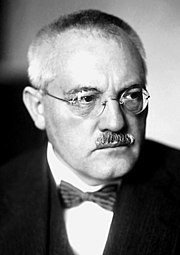NH3 (Ammonia)

The Chemistry
Ammonia has two major applications: fertilizer and explosives.


Of the nutrients necessary for plant growth, nitrogen is quite hard to obtain. Though air is 78% nitrogen, it must be fixed into a bio-available form through either natural or man-made processes. The development of the Haber process was so significant that it is estimated that fertilizer from ammonia produced by the Haber process helps sustain one-third of the Earth's population, and half the protein within human beings is made of nitrogen originally fixed using the Haber process.
As for explosives, the Haber-Bosch process allows ammonia to be oxidized and converted into nitric acid, which is the basis of explosives such as ammonium nitrate, nitro-glycerine, and trinitrotoluene (TNT). According to the International Nitrogen Initiative, it is responsible for the death of 150 million people.
The International Nitrogen Initiative also has more information about how ammonia is "the substance that changed the world."
Check it out: http://www.ini-europe.org/node/16
The History
World War I was a major application for chemical explosives derived from ammonia formed by the Haber-Bosch process. In 1910-1911, Bosch developed double-tubed hydrogen-resistant converters, which eventually led to the industrial conversion of ammonia to nitric acid, a main component of explosives used in the German military. Ammonia was first manufactured industrially in the BASF's Oppau plant in Germany, producing up to 20 tons of ammonia per day.
About Haber and Bosch: (I found this interesting because neither lived particularly happy lives)


Fritz Haber Carl Bosch
Haber is known as the "father of chemical warfare." Haber won the Nobel Prize in Chemistry in 1918. He did not mention the role of ammonia in chemical warfare in his acceptance speech at the Swiss Nobel Academy. Haber's wife, who opposed his work in chemical warfare, committed suicide in 1915. Haber left Germany following Hitler's rise to power and died of heart failure in 1934.
Bosch won the Nobel Prize in Chemistry in 1931. Bosch was a victim of depression and died in 1940.
